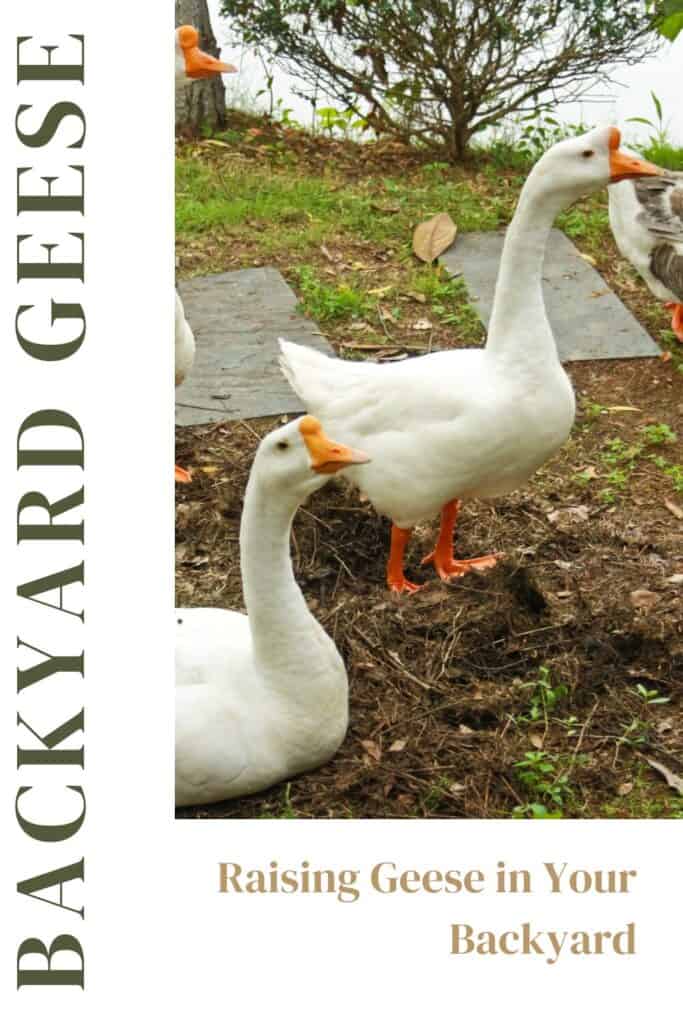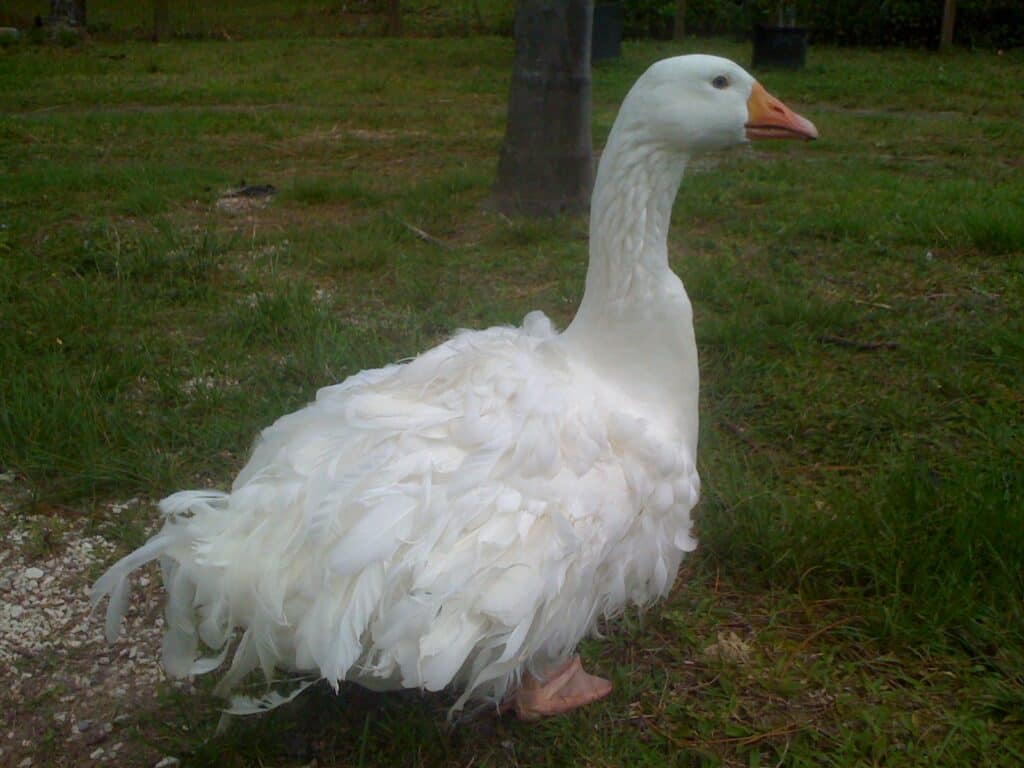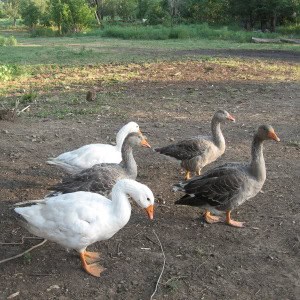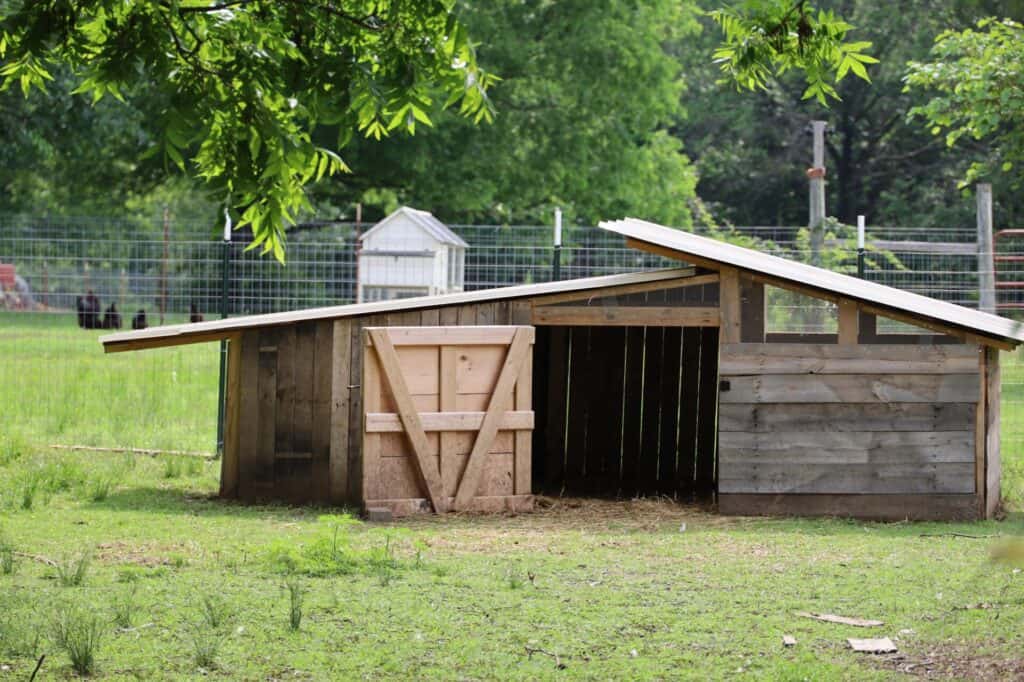Can you raise geese in your backyard? Yes! You can!
Raising geese can be a fun and rewarding backyard hobby. Geese produce delicious meat and large eggs, provide weed control, serve as watchdogs, and make great pets. With proper space and care, backyard geese can thrive. This article covers everything you need to know about keeping geese in your backyard.

Benefits of Raising Backyard Geese
Here are some of the top reasons for raising geese at home:
Delicious Meat and Large Eggs
Geese produce lean, high-protein, dark red meat. Their meat is more flavorful than chicken or turkey. Goose eggs are very large, averaging about 6 ounces per egg compared to a large chicken egg at 2 ounces. The eggs have a rich, creamy taste, perfect for baking.
Natural Weed Control
Geese are voracious grazers and will mow down grass, weeds, and vegetation. Let them loose in your yard or garden, and they will make quick work of overgrown areas. Their grazing helps fertilize the lawn as well.
Security System and Deterrent
Geese make loud honking noises at the slightest disturbance. They will alert you to unknown visitors or intruders. And the sight and sound of large geese may deter trespassers.
Between our geese and guineas (and dogs), I have a built-in security system! The geese will also provide additional protection for smaller birds such as ducks and chickens.
Great Pets and Company
Geese have big personalities. When raised gently, they make surprisingly affectionate and amusing pets. They’ll follow you around the yard and interact with you, kids, and other animals.
Our geese are not affectionate, but they do follow us around, when they aren’t too busy swimming in the pond.
Choosing a Goose Breed
The most common backyard goose breeds are:
Chinese or African Geese
These medium-sized geese only weigh 10-14 lbs. They are calm and have amusing personalities. Chinese geese lay 40-50 eggs per year, while Africans lay 60-80.
We have African geese. They have huge personalities and honk at me all the time.

Embden Geese
The largest purebred geese at 20-30 lbs. While big, they are known for being gentle and relaxed. Embdens lay 30-40 very large white eggs per year.

Sebastopol Geese
Small at 12-15 lbs but eye-catching with their long, curly white feathers. They lay 30-50 eggs per year.

Pilgrim Geese
A heritage breed, Pilgrims are small at 10-12 lbs. They are auto-sexing, meaning their gender can be identified by color. They lay 20-35 eggs per year.
If you need just a few eggs, choose a smaller but prolific laying breed like Africans. For lots of meat, Embdens provide the most pounds. Sebastopols and Pilgrims make nice backyard pets. Choose Chinese geese for an all-purpose bird.

Housing and Space Requirements
Geese need room to roam and graze. The minimum recommendation is 100-200 square feet of space per goose. The more room, the better.
They should have a pond or small pool at least 18 inches deep for swimming year-round, as they use water to clean their feathers and stay healthy.
Geese will sleep on the ground alongside a pond or pool. Provide a simple three-sided goose shelter with straw bedding to get out of sun, wind, or rain. The shelter should be predator and rodent-proof.
Use sturdy 4-5 foot high fencing sunk 1 foot into the ground around geese areas. Chain link, woven wire, or electric poultry netting all work. Make sure gates and openings are secured against nighttime predators like foxes and raccoons.
Our shelter (pictured below) has plenty of airflow with screens over all openings to keep out critters and has a secure door we close after sunset and open at sunrise. Our ducks and geese live together in this shelter at night. It keeps them out of the elements, gives them a place to hide from predators (they have hidden in here from hawks) and keeps them safe and secure at night when larger predators come out. We have not lost a single goose or duck with this shelter.
We have a kiddie pool inside their fenced area, but they tend to walk (or fly) to the pond every day.

Feeding and Nutrition
Geese eat grass, plants, seeds, fruits, and greens. They should have constant access to grass or hay. Provide supplemental pellets and grains like corn, oats, or wheat. Change out water daily and clean pools, feed areas, and shelters regularly to prevent disease.
Make sure not to overfeed geese with supplements. Overweight geese can have trouble breeding and laying eggs. Limit high-energy feeds according to the season. Give more when they are breeding and less when idle.
Offer crushed oyster shells, grit, and vitamin supplements for additional nutrition. Avoid sudden feed changes, as geese are sensitive to shifts in nutrition.
DO NOT feed your geese bread.
Manna Pro Duck & Goose Layer Pellet
- High Protein for Increased Egg Production | Formulated with Probiotics to Support Healthy Digestion | 8 Pounds
Goose Health and Wellness
When given space, shelter, plenty of grazing, and clean water, geese tend to be very hardy birds. Here are some tips for keeping backyard geese healthy:
- Check geese daily for signs of injury, bullying, or illness
- Isolate and treat any goose showing signs of sickness promptly
- Quarantine new geese for 30 days before mixing with your flock
- Disbud goslings shortly after hatching if not raising for meat
- Administer yearly vaccines for diseases like fowl pox
- Deworm, dust, and check for mites every few months
- CALL A VETERINARIAN FOR HELP WITH MEDICAL ISSUES
Signs of a healthy goose:
- Alert, active, and social
- Bright eyes, smooth feathers
- Strong straight neck and body stance
- Healthy appetite and energy levels
Breeding Geese
You’ll get the most eggs, meat, and new goslings if you raise breeding trios – two females with one male. Breeding season starts in early spring as the weather warms up.
Best breeding practices include:
- Allow one dominate male to breed up to six females.
- Provide extra feed and protein starting a month before breeding to support egg production.
- Artificially incubate eggs for hatching since geese may crush eggs once laid.
- Place nesting materials like straw in their shelter prior to breeding. Some geese will not nest on bare ground.
- Collect eggs for incubation daily, leaving dummy wooden eggs, so geese keep laying without getting broody.
- Dispose of any cracked, odd-shaped, or very dirty eggs. Clean others gently with fine sandpaper before incubating.
- Incubate eggs between 99.5° to 102°F with a relative humidity around 55%.
- Fertile eggs hatch at 30 days with goslings ready to swim and feed with parents right away.
Raising Goslings
Goslings grow rapidly in their first few weeks. Keep them healthy with these tips:
- Give goslings unlimited starter feed with a minimum 15% protein level.
- Provide fresh water with vitamins, electrolytes, and probiotics added daily. Use shallow troughs goslings can easily get in and out of.
- Let goslings swim under supervision for short periods during their first week when temperatures allow.
- Furnish a brooder shelter with a heat lamp, clean bedding, and adequate indoor space.
- When feathers start to develop at 4-6 weeks, goslings can go outdoors full-time.
- Watch for pasty vents, leg problems, infections, bullying, and poor growth among goslings and correct them promptly.
- Weigh geese weekly and consider individual housing or early harvest for birds over two pounds underweight from the flock average.

Potential Issues with Raising Geese
While geese can make great backyard livestock, there are some challenges to consider as well:
- They need a decent amount of space which may exceed what some urban or suburban lots provide.
- Geese can generate a lot of messy droppings, which must be constantly cleaned up.
- They make loud vocalizations whenever alarmed, which may disturb neighbors. Their honking can be a nuisance.
- Geese have strong herding and territorial instincts and may show aggressive behaviors, especially during breeding season.
- They can overgraze yards down to bare dirt if space is limited or grass is unable to regenerate.
- As precocial waterfowl, hand-rearing goslings take extra time and care compared to chicks.
- Geese can fall prey to predators like foxes or free-roaming dogs if not properly protected.
Many issues with raising geese occur when space or habitat is inadequate. Ensure you have at least 100 square feet per bird before committing to home geese husbandry. Neighbor relations should be carefully considered as well.
Is Raising Geese Right for You?
Before embarking on backyard goose-keeping, think over these questions:
- Do you have ample room to accommodate at least two geese?
- Are you prepared to clean up after them and handle their waste?
- Do you have water sources like a pond or pool for your geese?
- Are geese allowed per local ordinances and zoning in your municipality?
- Will your homeowner’s association or neighbors accept geese next door?
- Do you have or are you willing to put up effective fencing and shelters?
- Can you afford to properly feed and care for backyard geese?
- If keeping males, are you able to handle large territorial birds?
- Do you have a vet available to provide goose health care if needed?
- Will you have help with goose chores like cleaning pens while away on vacation?
- Are you comfortable culling older birds once they cease producing eggs?
If you can answer yes to most of these questions, your property should be a suitable habitat for a small backyard goose flock that will provide you with years of enjoyment.
Getting started with just a breeding trio is recommended before expanding your home goose enterprise. Be sure to check if permits, licenses, or other regulations apply in your area. Also, consider joining online waterfowl owner forums to connect with others experienced with goose care for advice and support.
With some simple preparations, the right breed choices, attentive husbandry, and effective protection measures raising backyard geese can be an extremely rewarding hobby on suitable semi-rural or suburban properties.